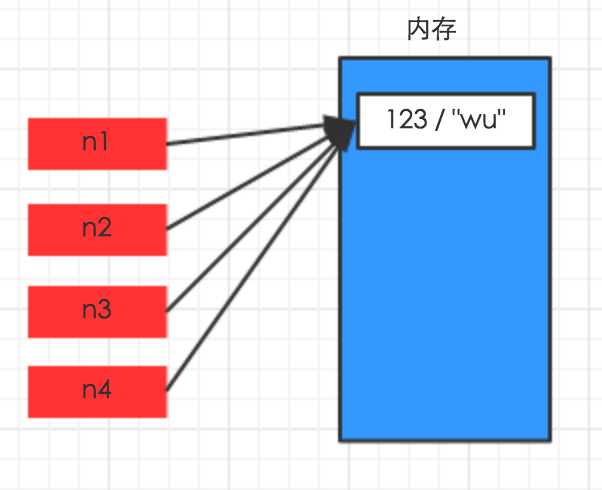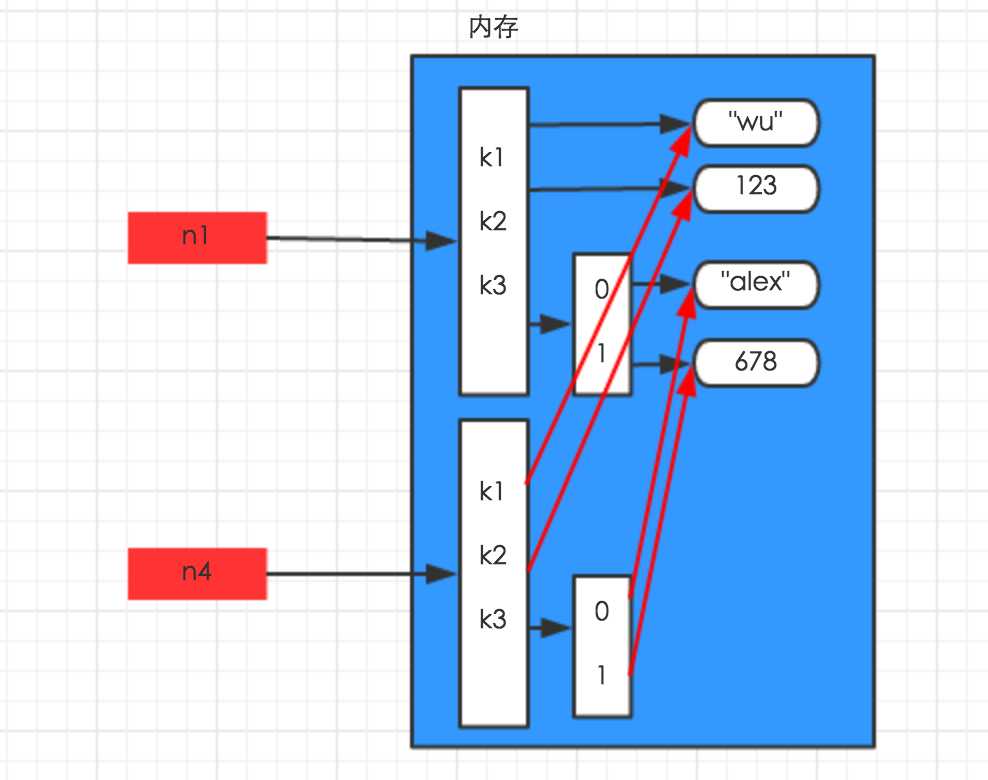Python之路第四篇--Python基础之函数
Posted
tags:
篇首语:本文由小常识网(cha138.com)小编为大家整理,主要介绍了Python之路第四篇--Python基础之函数相关的知识,希望对你有一定的参考价值。
三元运算
三元运算(三目运算),是对简单的条件语句的缩写
# 书写格式
result = 值1 if 条件 else 值2
# 如果条件成立,那么将 “值1” 赋值给result变量,否则,将“值2”赋值给result变量
基本数据类型补充
set
set集合,是一个无序且不重复的元素集合
class set(object):
"""
set() -> new empty set object
set(iterable) -> new set object
Build an unordered collection of unique elements.
"""
def add(self, *args, **kwargs): # real signature unknown
"""
Add an element to a set,添加元素
This has no effect if the element is already present.
"""
pass
def clear(self, *args, **kwargs): # real signature unknown
""" Remove all elements from this set. 清除内容"""
pass
def copy(self, *args, **kwargs): # real signature unknown
""" Return a shallow copy of a set. 浅拷贝 """
pass
def difference(self, *args, **kwargs): # real signature unknown
"""
Return the difference of two or more sets as a new set. A中存在,B中不存在
(i.e. all elements that are in this set but not the others.)
"""
pass
def difference_update(self, *args, **kwargs): # real signature unknown
""" Remove all elements of another set from this set. 从当前集合中删除和B中相同的元素"""
pass
def discard(self, *args, **kwargs): # real signature unknown
"""
Remove an element from a set if it is a member.
If the element is not a member, do nothing. 移除指定元素,不存在不保错
"""
pass
def intersection(self, *args, **kwargs): # real signature unknown
"""
Return the intersection of two sets as a new set. 交集
(i.e. all elements that are in both sets.)
"""
pass
def intersection_update(self, *args, **kwargs): # real signature unknown
""" Update a set with the intersection of itself and another. 取交集并更更新到A中 """
pass
def isdisjoint(self, *args, **kwargs): # real signature unknown
""" Return True if two sets have a null intersection. 如果没有交集,返回True,否则返回False"""
pass
def issubset(self, *args, **kwargs): # real signature unknown
""" Report whether another set contains this set. 是否是子序列"""
pass
def issuperset(self, *args, **kwargs): # real signature unknown
""" Report whether this set contains another set. 是否是父序列"""
pass
def pop(self, *args, **kwargs): # real signature unknown
"""
Remove and return an arbitrary set element.
Raises KeyError if the set is empty. 移除元素
"""
pass
def remove(self, *args, **kwargs): # real signature unknown
"""
Remove an element from a set; it must be a member.
If the element is not a member, raise a KeyError. 移除指定元素,不存在保错
"""
pass
def symmetric_difference(self, *args, **kwargs): # real signature unknown
"""
Return the symmetric difference of two sets as a new set. 对称差集
(i.e. all elements that are in exactly one of the sets.)
"""
pass
def symmetric_difference_update(self, *args, **kwargs): # real signature unknown
""" Update a set with the symmetric difference of itself and another. 对称差集,并更新到a中 """
pass
def union(self, *args, **kwargs): # real signature unknown
"""
Return the union of sets as a new set. 并集
(i.e. all elements that are in either set.)
"""
pass
def update(self, *args, **kwargs): # real signature unknown
""" Update a set with the union of itself and others. 更新 """
pass
练习:寻找差异
#!/usr/bin/env python
# -*-coding:utf-8 -*-
old_dict = {
"#1":11,
"#2":22,
"#3":100,
}
new_dict = {
"#1":33,
"#4":22,
"#7":100,
}
old_set = set(old_dict.keys())
new_set = set(new_dict.keys())
same_set = old_set.intersection(new_set)
up_set = new_set.difference(old_set)
ret_dict = {}
for k in same_set:
ret_dict[k]=new_dict[k]
for i in up_set:
ret_dict[i]=new_dict[i]
print(ret_dict)
# print(old_set)
# print(new_set)
深浅拷贝
一、数字和字符串
对于 数字 和 字符串 而言,赋值、浅拷贝和深拷贝无意义,因为其永远指向同一个内存地址。
import copy a = 132 b = ‘Ales‘ # ## 浅拷贝 ## aa = copy.copy(a) bb = copy.copy(b) # ## 深拷贝 ## aaa = copy.deepcopy(a) bbb = copy.deepcopy(b) print(id(a),id(aa),id(aaa)) print(id(b),id(bb),id(bbb)) # ## 1691783456 1691783456 1691783456 # ## 47227376 47227376 47227376

二、其他基本数据类型
对于字典、元祖、列表 而言,进行赋值、浅拷贝和深拷贝时,其内存地址的变化是不同的。
1、赋值
赋值,只是创建一个变量,该变量指向原来内存地址,如:
n1 = {"k1": "wu", "k2": 123, "k3": ["alex", 456]}
n2 = n1

2、浅拷贝
浅拷贝,在内存中只额外创建第一层数据
import copy
n1 = {"k1": "wu", "k2": 123, "k3": ["alex", 456]}
n3 = copy.copy(n1)
print(id(n1),id(n3))
print(id(n1["k1"]),id(n3["k1"]))
# 44947080 45383304
# 45327056 45327056

3、深拷贝
深拷贝,在内存中将所有的数据重新创建一份(排除最后一层,即:python内部对字符串和数字的优化)
import copy
n1 = {"k1": "wu", "k2": 123, "k3": ["alex", 456]}
n4 = copy.deepcopy(n1)
print(id(n1),id(n4))
print(id(n1["k3"]),id(n4["k3"]))
print(id(n1["k3"][0]),id(n4["k3"][0]))
# 56088200 56460680
# 58962760 58930696
# 56506216 56506216

函数
以上是关于Python之路第四篇--Python基础之函数的主要内容,如果未能解决你的问题,请参考以下文章